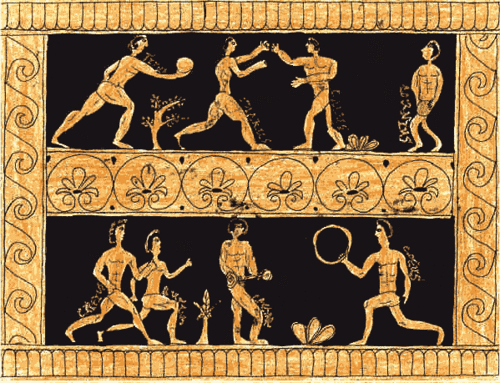In Ancient Greek, kalos sthenos (καλὸς στῆνος) translates to "beautiful strength" or "strength that is beautiful". This phrase is the origin of the English word "calisthenics," which refers to exercises that use body weight to build strength and physical beauty.
Becoming a world-class calisthenics athlete requires a meticulous, science-backed training approach. This program outlines a comprehensive weekly schedule incorporating skill work, strength progressions, mobility, conditioning, and planned recovery. It is grounded in proven sports science principles such as progressive overload, periodization, and active recovery.
Progressive overload: means gradually increasing training difficulty (through added intensity, volume, or complexity) to continually challenge the body. Without progressive increases (kept to reasonable jumps, ~10% weekly) the body adapts and plateaus, whereas too-rapid increases risk injury.
Periodization: refers to cycling training stress over time – phases of intense work followed by phases of reduced load – to maximize gains and avoid overtraining.
Mesocycle: This program uses a 3:1 mesocycle (three weeks of intensifying training followed by a one-week deload) to allow supercompensation and continual progress. Strategic rest and recovery are not downtime but essential components of improvement: muscles and connective tissues strengthen during rest, and skipping recovery leads to stagnation or injury. High-level calisthenics also demands movement quality, so equal emphasis is placed on mobility, technique, and prehabilitation to safeguard the body while pushing its limits.
1. What is Periodization?
Periodization is the systematic planning of training to maximize performance while minimizing injury and overtraining.
It involves progressively overloading the body and then allowing planned recovery phases so the body can adapt, grow stronger, and avoid burnout.
Key Features:
Divides training into phases with specific goals (e.g., strength, endurance, recovery).
Each phase targets different attributes to build a well-rounded and resilient athlete.
Helps peak at the right time (e.g., for a competition or skill milestone).
2. What is a Mesocycle?
A mesocycle is a medium-length training block, typically lasting 3–6 weeks, that focuses on a specific goal.
It’s part of the larger periodization model:
Example (Mesocycle in Calisthenics):
Goal: Build Front Lever Strength
Duration: 4 weeks
Plan:
Week 1–3: Gradually increase intensity (e.g., harder progressions, longer holds, added reps)
Week 4: Deload — reduce volume/intensity by ~50% to recover and adapt
Why Use Periodization and Mesocycles in Calisthenics?
Prevents plateaus and overuse injuries
Enhances specific adaptation (e.g. static holds vs dynamic moves)
Improves recovery and longevity
Allows skill and strength goals to be cycled without conflicting
Program Goals: This 7-day schedule is designed to develop elite calisthenics strength and skills, specifically the planche, front lever, one-arm pull-up (OAP), handstand push-up (HSPU), and human flag. Each day has a primary focus (push vs. pull, or active recovery) with dedicated skill practice and complementary strength work. Accessory exercises target supporting muscle groups, balance push/pull musculature, and condition connective tissue to prevent injury. Regular mobility work and active recovery sessions are integrated to enhance performance and reduce soreness. The overall plan is cyclical: training variables are adjusted weekly (and across cycles) to ensure progressive overload and adequate recovery. The schedule is intensive and intended for advanced practitioners – it assumes you have a solid foundation (e.g. can do ~15 pull-ups, 15 dips, freestanding handstand, etc.) before tackling these elite progressions. By following this program with consistency and good nutrition/recovery habits, you will build the strength, skill-specific capacity, and resilience needed to perform at a world-class level.
-
Add a short summary or a list of helpful resources here.
